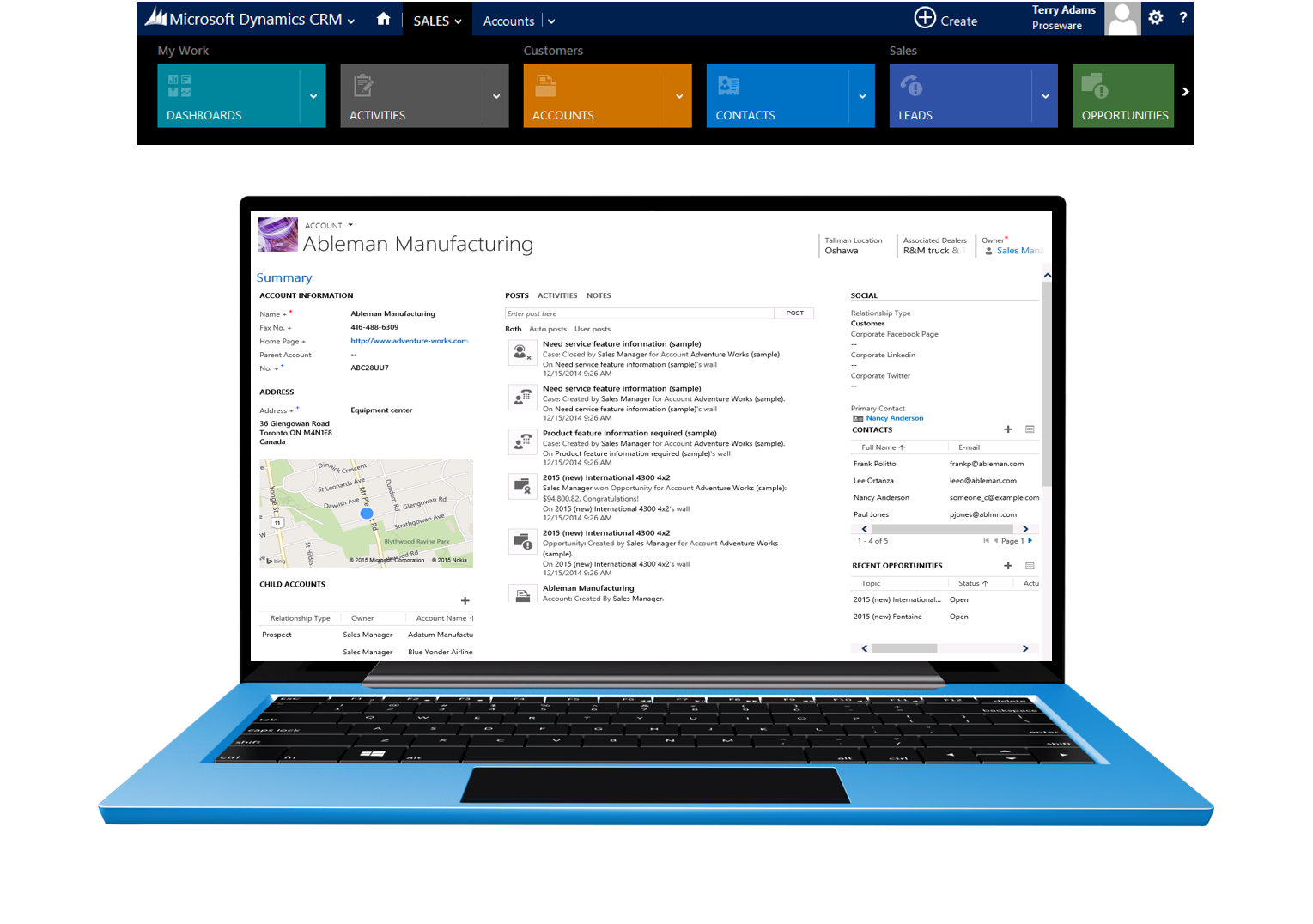Microsoft Purchase Linkedin and what it means to the average sales rep/marketer
Without a doubt, social CRM is one of the biggest trends that you’ll find the business to business environment. Every day I go into boardrooms and people’s sales strategies are
- Introduce yourself and offer to connect with him online
- Before you warm call or visit a company, look them up and see if you have a connection.
So if you’re looking to save time – either initiating the email, looking up or keeping track you need direct integration to Linkedin and your choices are Dynamics CRM or Salesforce.com
Several years ago I had imagined that Linkedin would eventually create its own CRM. It makes sense now that Microsoft has purchased it, although I never imagined it would be for 26.2 billion dollars or to put it into perspective, they paid about $60 for my name.
I would imagine though that slowly they will monetize the ecosystem. Either in the forms of advertisements (if you’re not on a corporate account, just like skype) or see to derive some insight from the data. Remember that Facebook and google have tons of search logic and insight in its users but Microsoft has very little (unless you use bing).
I think that the purchase of Linkedin is really a message to the world that Microsoft is serious about social media and it wants in on the game. Linkedin provides some staggering statistics of electronic water-front.
433 million users, growing 19% per year, 2 members added per second with a goal of 3 billion people.
Some of the creepier thoughts are on its ability to own every ounce of content that is posted.
If you think about how Linkedin is used I think it gives you some perspective
From a Dynamics CRM or your organization, I imagine you would use Linkedin integrated to CRM to do the following.

Sales
- Warm Introductions
- Notifications if something has changed
- Identify and being introduced to new prospects
Marketing
- 1st, 2nd, 3rd party connections would be able to touch everyone related in your community, profession
- Running CRM campaigns into LinkedIn
Customer Service
- Complaints automatically monitored would result in immediate customer service
Microsoft Monetization Strategy (hypothesis)
- Lynda.com – this was purchased by linked in for 1 billion dollars
- Selling all Linkedin users Office365 + CRM
- Advertisements for paid non-members, corporate or pro
- Paid boosts for companies wishing to push social material
- Recruitment agencies
- Social media insights
- Search results
- Content generated
The next question is do you use Linkedin? And how do you use it, in what form, and how often.
Me personally, I rarely use Linkedin, anymore at least from a personal perspective. I do use it from a corporate perspective. Here is a history of my experience
Year
2005 – 2006 The honey moon phase
2006 – 2008 The Golden years
2009-2012 Recruitment years
2012-2014 Pro versions
2014-2016 Social Media
2005 to 2008 It was good in the beginning because I was able to connect to people you I had no other way of being re-introduced. Even people who were hard to find became easier to find after a year or 2 as my network grew. And just like Facebook I started to horde names, regardless of how close I was to the person.
In 2009 Linkedin then it became very annoying. Daily I would receive spam, phone calls, and emails from every recruiter on the planet.
2010 Linkedin introduced the pro-version, which meant that you couldn’t spy on your ex-girlfriend, or look at anyone in fear that they would immediately see that you looked
2014 Everyone started to post content through linkedin, bots started to come online and the news feed which at one time I really enjoyed the Richard Branson thoughts got lost in the noise. It was around this time as well that our company was joining the social media phenomena and the linkedin account became less about ‘me’ and more about ‘corporate me’
So now the question is, am I alone (white, 40, male, knowledge worker, in sales)? I am a firm believer in demographics and therefore believe that creating ads on linkedin may draw my attention, like google ad-words, but without some sort of content filter for me, don’t waste your time trying to market or customer service issues. I’m not going to post anything other than ‘can I call’ and am not going to read anything without filters built in or a choice on what I can see.
Hopefully this gives you some insight and was educational. Below are the links I used to create this blog.
https://channellife.com.au/story/why-did-microsoft-purchase-linkedin-treasure-trove-information/
http://www.usatoday.com/videos/tech/news/2016/06/13/85832784/
http://www.arnnet.com.au/article/601647/why-did-microsoft-buy-linkedin/
https://techboomers.com/t/what-is-lynda
http://www.cyprusnewsreport.com/2016/06/microsoft-purchase-linkedin-mean-marketers/
http://expandedramblings.com/index.php/by-the-numbers-a-few-important-linkedin-stats/
